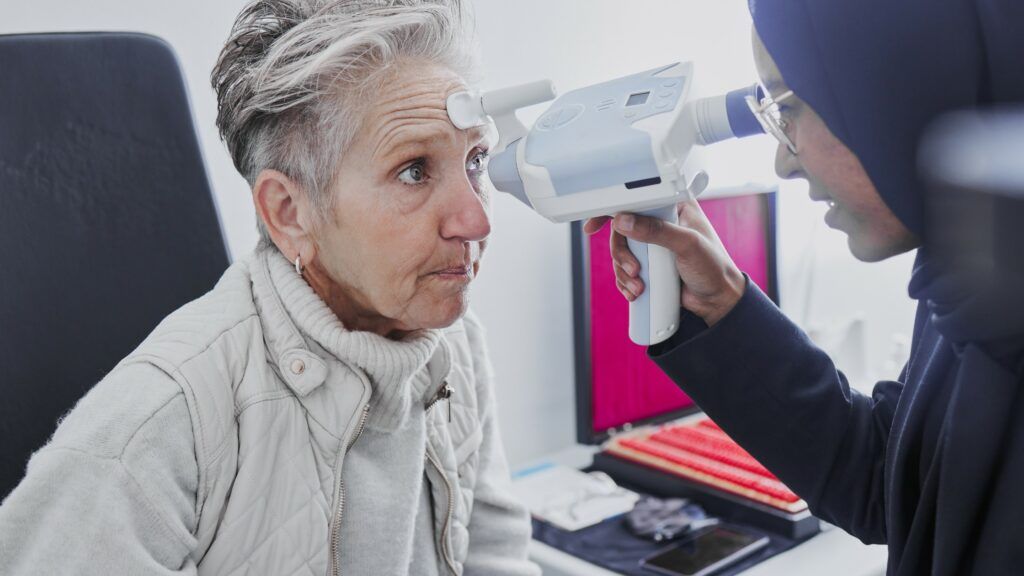In the realm of ophthalmic diagnostics, retinal cameras reign supreme, offering invaluable insights into retinal health and early detection of sight-threatening conditions. Equipping your practice or facility with the right retinal camera empowers accurate diagnoses, informed treatment decisions, and ultimately, superior patient care. This comprehensive buying guide, meticulously crafted for B2B medical device buyers across the globe, aims to illuminate the intricacies of retinal cameras, guiding you towards the optimal choice for your specific needs.
Essential Retinal Camera Features
- Image Quality: Prioritize cameras capturing high-resolution, detailed images for accurate diagnosis of subtle retinal abnormalities. Explore features like wide field-of-view, auto-focus, and red-free capture for comprehensive examinations.
- Portability and Ergonomics: Consider portable models for increased flexibility and ease of use during home visits or outreach programs. Lightweight, ergonomic designs enhance comfort for both patients and practitioners.
- Connectivity and Data Management: Seamless integration with electronic medical records (EMRs) through USB ports, wireless connectivity, or cloud storage options streamlines workflow and facilitates efficient data management.
- Ease of Use: Intuitive interfaces and user-friendly controls expedite examinations and minimize operator dependence. Look for models featuring automated functions like pupil dilation assessment and image capture protocols.
- Cost-Effectiveness: Define your budget upfront and explore options that balance affordability with essential features and desired image quality. Remember, long-term value and reliable after-sales support are crucial factors.
Understanding Key Technologies
- Mydriatic Retinal Cameras: These require pupil dilation for detailed fundus examination, offering high-resolution images. However, consider potential patient discomfort associated with dilation.
- Non-Mydriatic Retinal Cameras: Eliminating the need for dilation, these offer enhanced patient comfort and convenience. However, image quality might be slightly lower than mydriatic models.
Fundus Photography and - Fluorescein Angiography (FA): Opt for models facilitating both procedures for comprehensive evaluation of retinal vasculature and potential leakage.
- Telemedicine Compatibility: Explore models compatible with telemedicine platforms, enabling remote consultations and specialist referrals, particularly valuable in underserved areas.
Types of Retinal Camera
Retinal cameras can be categorized based on their mobility and functionality. Here are some common types
- Fixed: These are stationary retinal cameras typically found in eye clinics or hospitals. They are mounted on a fixed platform or wall and are not portable.
Handheld/Portable Retinal Cameras: - Mobile: These are portable and often compact devices that can be moved around easily. They may be used in different locations within a clinic or even taken to remote areas for mobile eye screenings.
Specialized Retinal Cameras
- Fundus Autofluorescence (FAF) Cameras: These cameras capture images based on the natural fluorescence of the retina, providing information about retinal health.
- Fluorescein Angiography Cameras: Used to visualize blood flow in the retina by injecting a fluorescent dye into the bloodstream.
Optical Coherence - Tomography (OCT) Cameras: Combining retinal imaging with cross-sectional analysis, OCT provides detailed information about retinal layers.
When it comes to perimetry, there are different types as well, but they are not directly related to retinal cameras. Perimetry methods include kinetic perimetry (using moving stimuli) and static perimetry (using static stimuli), but these are separate diagnostic techniques from retinal imaging.
Leading Retinal Camera Manufacturers
Forus Health Pvt. Ltd
Forus Health Pvt. Ltd.‘s 3nethra neo Retinal Camera, manufactured in India, emerges as a groundbreaking solution for affordable and reliable eye care. Now available in South Africa and Nigeria, this mydriatic wide-field digital imaging system specializes in pediatric ocular diseases, capturing high-resolution images with a broad 120-degree field of view. Renowned in Kenya as the top-tier eye scanner, its compact, portable design facilitates single-handed operation, catering to diverse clinical settings from hospitals to Neonatal Intensive Care Units (NICU). While offering a non-invasive approach to pediatric ocular imaging, the 3nethra neo provides a user-friendly interface for qualified clinicians, ensuring efficient utilization in routine screenings and disease management.
This state-of-the-art retinal camera, devoid of direct analysis capabilities, excels in acquiring digital photographs of the eye. Backed by Forus Health’s commitment to eradicating avoidable blindness, the 3nethra neo sets new standards in precision and affordability. Elevate your eye care practice with this revolutionary device, where cutting-edge technology meets accessibility, making a significant impact on the early diagnosis and management of ocular conditions in pediatric patients.
Additional Considerations
- Practice Setting and Volume: Consider your patient population, examination frequency, and portability needs when choosing a model.
- Regulatory Compliance: Ensure the camera adheres to relevant international regulatory standards for medical devices.
- Warranty and Service: Opt for manufacturers offering comprehensive warranties and readily available service support to minimize downtime and ensure long-term functionality.
- Training and Support: Inquire about available training programs and ongoing support options to ensure your staff operates the camera effectively.
Disclaimer: This buying guide provides general information and should not replace professional advice and guidance
